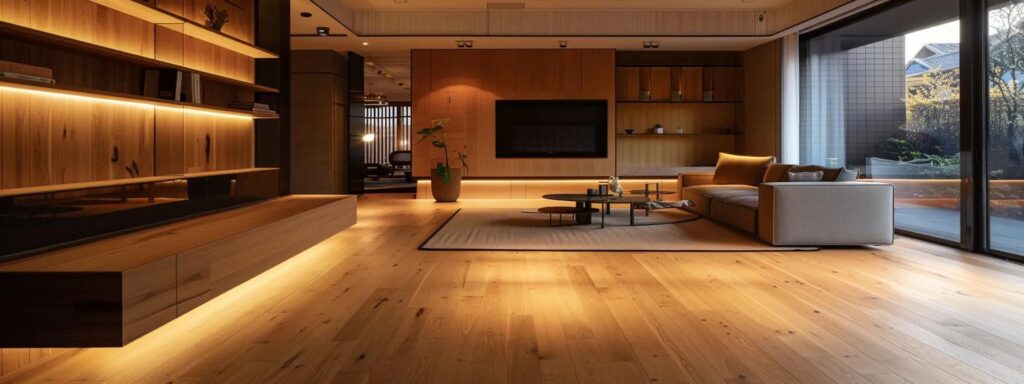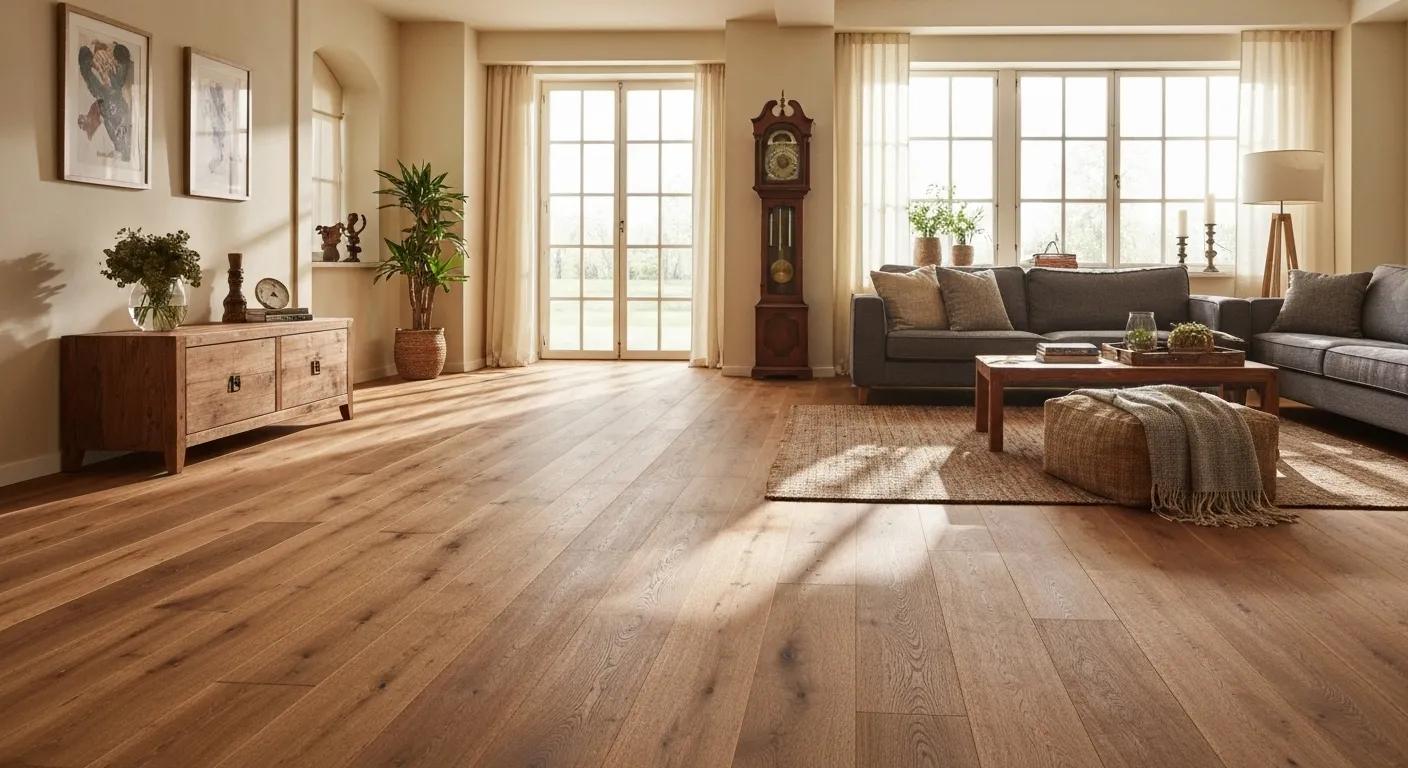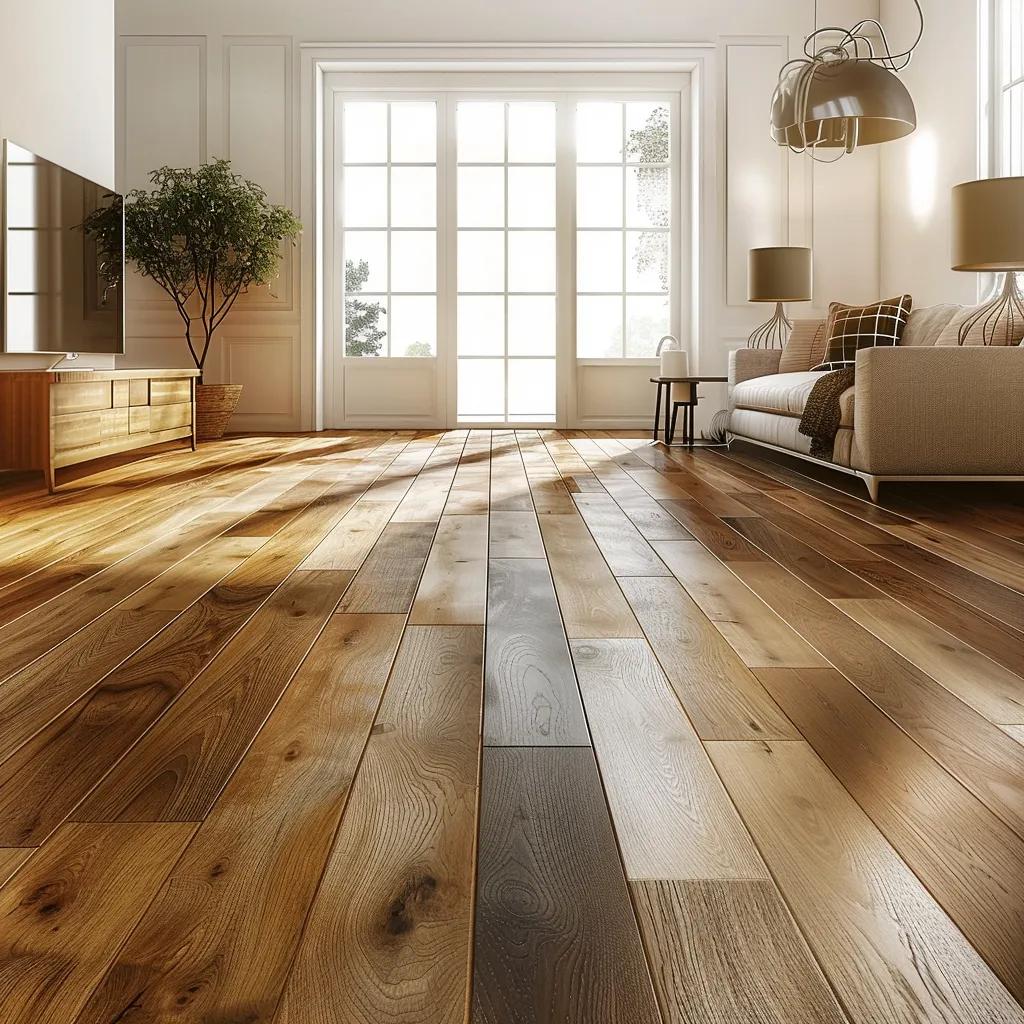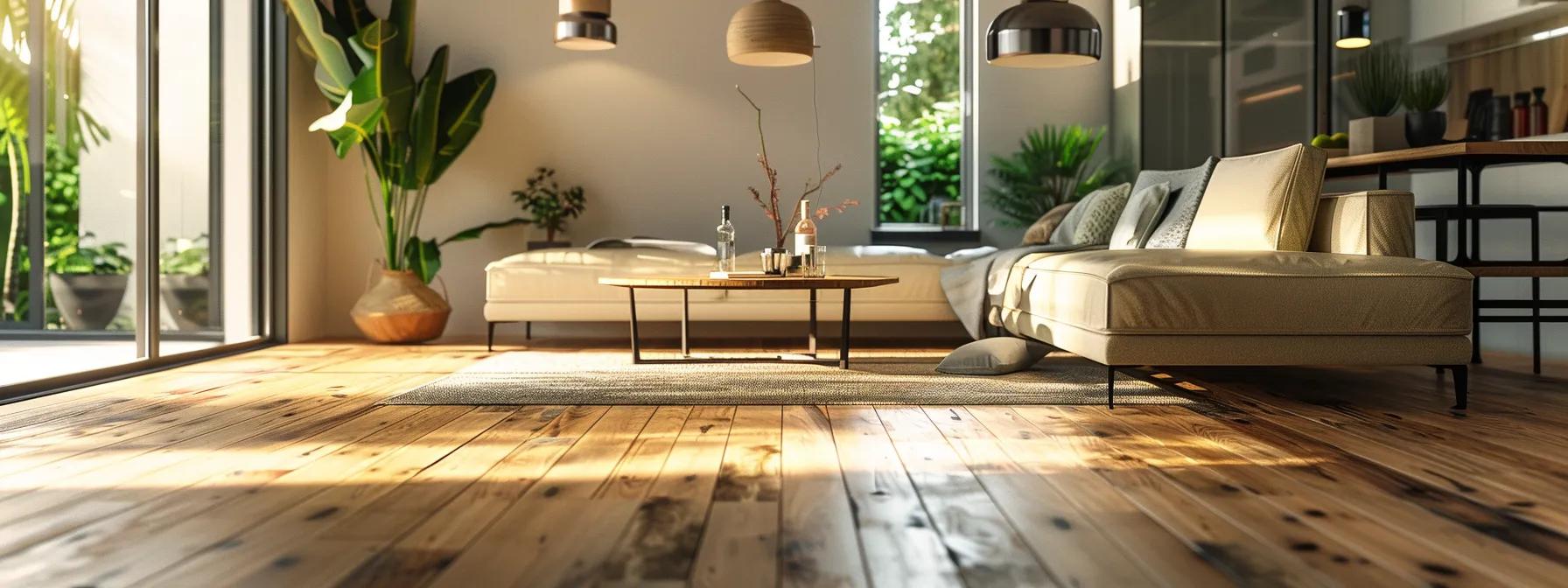In today’s construction and interior design industries, eco-friendly hardwood flooring is in high demand as homeowners and business owners prioritize sustainability and environmental responsibility. These flooring options address deforestation, carbon emissions, and indoor air quality concerns while maintaining the beauty and durability of traditional hardwood floors. This article examines several eco-friendly options—including reclaimed wood, FSC-certified wood, bamboo, cork, and low-VOC alternatives—and outlines sustainable installation practices. Readers will learn how these flooring solutions can improve indoor environments, reduce carbon footprints, and support responsible resource management while offering lasting aesthetic appeal.
Table of Contents
What Are Eco-Friendly Hardwood Flooring Options?
Eco-friendly hardwood flooring minimizes environmental harm while delivering traditional hardwood aesthetics and durability. Manufactured using sustainable methods, responsibly sourced materials, and low-impact finishing techniques, these options reduce carbon emissions and indoor pollutants without sacrificing quality.
How Is Hardwood Flooring Made Sustainable?
Sustainable hardwood flooring is produced by using reclaimed wood, recycling surplus materials, and sourcing timber from ethically managed forests. Responsible harvesting lowers deforestation impacts, while certification programs and green building standards promote renewable resources and reduced volatile organic compounds (VOCs). Advanced finishing processes—such as water-based or low-VOC treatments—and engineered wood innovations also help decrease the use of virgin materials and lower indoor air quality risks.
Which Certifications Ensure Eco-Friendly Flooring?
Certifications verify that hardwood floors meet environmental standards. Labels such as the Forest Stewardship Council (FSC), Sustainable Forestry Initiative (SFI), and Programme for the Endorsement of Forest Certification (PEFC) confirm wood comes from responsibly managed forests. Low-VOC certifications and GREENGUARD standards further ensure improved indoor air quality by limiting harmful chemical emissions. These certifications provide transparency and help consumers choose products that support sustainable practices.
What Are the Environmental Benefits of Eco-Friendly Flooring?
Eco-friendly flooring reduces carbon footprints and enhances indoor air quality by using responsibly sourced and reclaimed materials. Sustainable production practices conserve natural resources, reduce waste, and limit deforestation. Water-based or low-VOC sealants minimize hazardous emissions, while sustainable installation methods improve a building’s overall energy efficiency and lower operational costs. Together, these factors ensure that performance and environmental responsibility coexist in modern flooring solutions.
What Are the Benefits of Reclaimed Wood Flooring for Sustainable Homes?
Reclaimed wood flooring repurposes materials from old structures or barns instead of harvesting new timber. This approach conserves forest resources, reduces waste and energy usage, and adds unique character and history to each installation, making reclaimed wood a sustainable and attractive option.
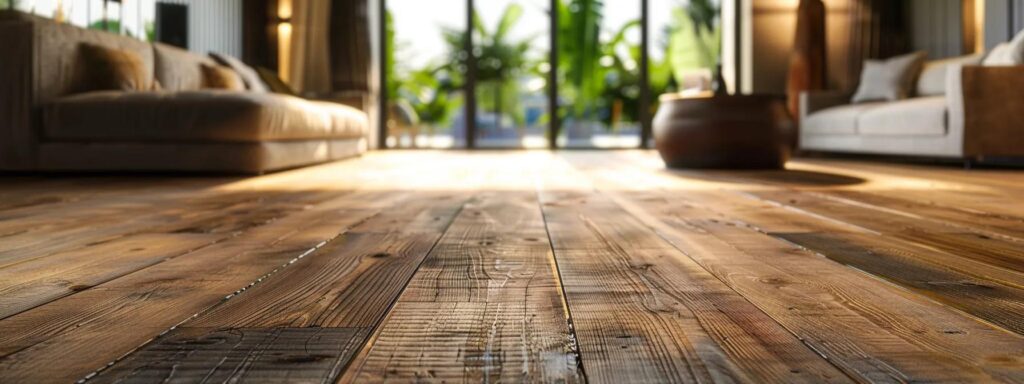
How Is Reclaimed Wood Sourced and Certified?
Reclaimed wood is obtained from deconstructed buildings, old furniture, or other discarded wood items. The wood is rigorously cleaned, certified, and treated to meet modern building standards while preserving its natural patina. Certification bodies inspect these materials for quality and environmental compliance, ensuring that buyers receive truly reclaimed and responsibly produced wood.
What Are the Durability and Aesthetic Advantages of Reclaimed Wood?
Reclaimed wood flooring exhibits rich textures, deep grain patterns, and a natural patina that deepens with age. Typically sourced from older, sturdier trees, this flooring offers long-lasting durability and a distinctive aesthetic that suits both modern and traditional designs. In addition to its environmental benefits, reclaimed wood provides an inherent historical narrative, making each installation unique.
How Should Reclaimed Wood Flooring Be Installed and Maintained?
Due to natural variations in moisture and grain, reclaimed wood requires expert installation using specialized adhesives or floating floor methods. Proper maintenance—including regular eco-friendly cleaning, periodic refinishing, and humidity control—is essential to preserve both appearance and durability over time.
Why Choose FSC-Certified Wood Flooring for Your Eco-Friendly Home?
FSC-certified wood flooring assures consumers that the wood is harvested from responsibly managed forests. This certification enforces strict environmental, social, and economic standards, ensuring a sustainable balance between human needs and nature conservation.
What Does FSC Certification Mean for Hardwood Flooring?
FSC certification guarantees that hardwood is sourced from forests managed to protect biodiversity and promote forest regeneration. With independent audits and rigorous standards, FSC certification builds consumer trust by ensuring responsible harvesting practices that support both reforestation and community development.
Which Types of FSC-Certified Wood Are Available?
FSC-certified wood is available in many species such as oak, maple, walnut, and teak. Manufacturers offer a range of engineered and solid hardwood products that cater to various design preferences and durability requirements while meeting sustainable sourcing standards. This diversity allows homeowners and designers to seamlessly integrate environmental responsibility into any interior design.
How Does FSC-Certified Flooring Support Sustainable Forestry?
By using FSC-certified wood, flooring products contribute to the protection of ecosystems and wildlife habitats while preventing illegal logging and deforestation. The certification supports ongoing research, adaptive management techniques, and sustainable forestry practices that mitigate the effects of climate change. In turn, homeowners benefit from high-performance flooring that supports global efforts toward sustainable resource management.
How Does Bamboo Flooring Compare as an Eco-Friendly Hardwood Alternative?
Bamboo flooring is an attractive eco-friendly alternative to traditional hardwood floors. Although bamboo is technically a grass, its rapid growth and renewability make it an excellent sustainable option, particularly for modern homes seeking both durability and a contemporary aesthetic.
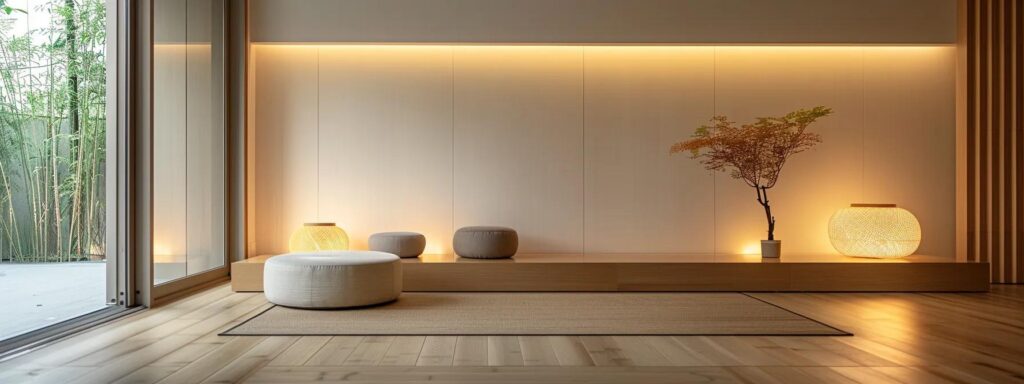
What Are the Properties and Benefits of Bamboo Flooring?
Bamboo flooring is prized for its rapid renewability, high durability, and reduced environmental impact during production. Its molecular structure provides strength comparable to hardwood, while its natural resistance to wear, moisture, and insects makes it an excellent choice for many interior applications. Bamboo also features vibrant color variations that can complement both modern and classic designs while minimizing the carbon footprint of new wood products.
How Does Bamboo Flooring Compare to Traditional Hardwood?
Bamboo flooring stands out for its renewability, as certain species can mature in just three to five years compared to decades for traditional hardwoods. Despite its rapid growth, bamboo offers a similar aesthetic appeal and comparable strength to hardwood species such as oak and maple. In addition, its cost-effectiveness and reduced resource requirements during processing make bamboo a smart, sustainable alternative without sacrificing style or performance.
What Are the Best Practices for Installing and Caring for Bamboo Floors?
To ensure optimal performance, bamboo flooring should be installed by professionals experienced with its expansion and contraction properties. Best practices include acclimating the bamboo prior to installation, preparing a suitable subfloor, and using eco-friendly adhesives and fasteners. Regular maintenance—such as routine sweeping, damp mopping, and periodic application of low-VOC sealers—helps preserve the floor’s finish and extend its lifespan.
What Makes Cork Flooring a Sustainable Option for Eco-Friendly Homes?
Cork flooring is widely recognized for its sustainability due to its distinctive harvesting process and natural properties. Harvested from the bark of cork oak trees without harming the tree, cork is a renewable resource that contributes to forest conservation while offering unique functional benefits.
What Are the Unique Properties and Benefits of Cork Flooring?
Cork flooring provides natural insulation, sound absorption, and antimicrobial properties, creating a comfortable indoor environment with reduced noise and stable temperatures. Its resilient nature makes it resistant to wear, scratches, and dents, while a cushioned feel underfoot adds comfort. Environmentally, the sustainable harvesting of cork supports tree regeneration and biodiversity without necessitating tree removal.
How Does Cork Flooring Compare to Other Eco-Friendly Options?
Unlike reclaimed wood that requires extensive processing, cork is available in a nearly ready-to-use state and offers natural thermal and acoustic benefits. Compared to bamboo, cork’s softer texture and superior noise reduction capabilities make it ideal for both residential and commercial interiors where comfort and quiet are priorities. Although it may carry a higher upfront cost, its durability and low maintenance expenses offer long-term value.
How Should Cork Flooring Be Installed and Maintained?
Cork flooring installation typically involves a floating system or low-VOC adhesive methods to maintain indoor air quality. It is essential to ensure the subfloor is dry and level to prevent warping. Routine care includes gentle cleaning with a damp mop and periodic application of eco-friendly sealers to preserve its finish and longevity.
How Do Low-Voc Hardwood Flooring Options Improve Indoor Air Quality?
Low-VOC hardwood flooring is designed to reduce the emission of volatile organic compounds, thereby improving indoor air quality and reducing health risks. This is achieved by utilizing water-based finishes, natural oils, and eco-friendly adhesives that minimize the release of harmful chemicals into the living environment.
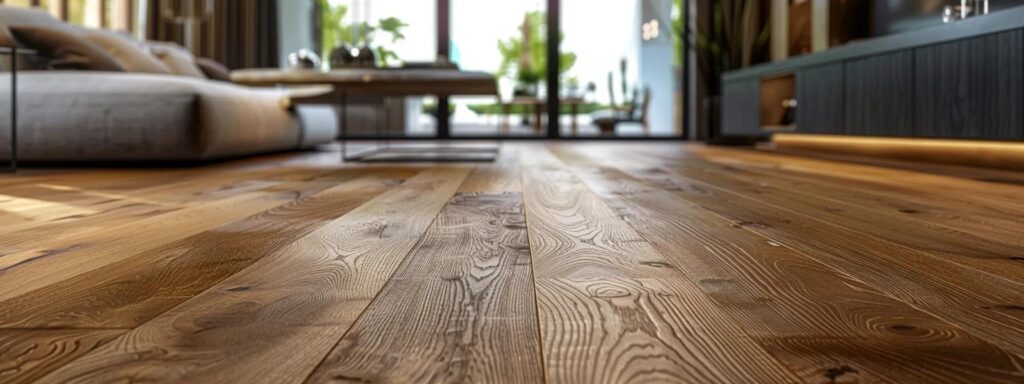
What Are VOCs and Why Do They Matter in Flooring?
VOCs are chemicals found in traditional finishes and adhesives that can negatively impact indoor air quality by contributing to pollution and causing respiratory issues and other health problems. Low-VOC flooring uses alternative formulations that significantly reduce these emissions, benefiting sensitive groups such as children and the elderly while complying with green building standards.
Which Flooring Products Offer Low-Voc Certifications?
Many flooring manufacturers now produce hardwood options that carry low-VOC and GREENGUARD certifications. These products, which include engineered hardwood finished with water-based sealants and systems installed with low-VOC adhesives, have been independently tested to meet strict emission limits. These certifications provide consumers with confidence that their chosen flooring contributes to a healthier indoor environment.
How to Choose and Maintain Low-Voc Flooring for a Healthy Home?
To select low-VOC flooring, consumers should look for recognized certifications and clear labeling regarding chemical content. After installation, proper care involves regular cleaning with eco-friendly products and periodic refinishing with low-emission sealers. Maintaining low-VOC floors also requires controlling moisture and dirt accumulation to prevent allergens, ensuring enduring indoor air quality and sustainability.
What Are Sustainable Installation Practices for Eco-Friendly Hardwood Flooring?
Sustainable installation methods not only extend the lifespan of eco-friendly hardwood flooring but also minimize waste and energy use during the process. Key practices include using green adhesives, finishes, and precise design systems that reduce material waste and environmental impact.
Which Eco-Friendly Installation Methods Reduce Environmental Impact?
Techniques such as precision cutting reduce material wastage, and floating or nail-down installations often eliminate the need for extra adhesives. Incorporating modular design and recyclable packing materials further conserves energy during transport and installation. These streamlined methods not only lower the environmental footprint but also ensure a more efficient, sustainable process.
What Sustainable Adhesives and Finishes Are Recommended?
Water-based glues and low-VOC sealants are recommended for hardwood flooring installations because they reduce chemical emissions while maintaining performance. Manufacturers now offer a variety of adhesives that meet green building standards, and plant-based finishes provide a durable protective layer without the drawbacks of traditional solvents.
How Can Waste Be Minimized During Flooring Installation?
Effective waste minimization is achieved by careful planning, precision cutting, and recycling scrap materials. Digital planning tools and strict measurement protocols ensure efficient material use, while recycling of offcuts and sawdust further reduces waste. When coupled with efficient logistics and recycling programs, these practices contribute to a circular economy and lower installation costs.
Table and List Examples
Before the FAQ section, the following table summarizes key attributes of various eco-friendly flooring options:
| Flooring Type | Main Resource | Certification | Key Benefit | Maintenance Requirement |
|---|---|---|---|---|
| Reclaimed Wood | Salvaged wood | None/Audited | Unique character and reduced waste | Periodic refinishing and cleaning |
| FSC-Certified Wood | Responsibly managed timber | FSC, SFI, PEFC | Responsible sourcing, enhanced indoor air quality | Regular cleaning; low-VOC finish |
| Bamboo | Renewable grass | GreenGuard Certified | Rapid renewability and durability | Gentle cleaning; avoids excessive moisture |
| Cork | Cork oak bark | FSC (optional) | Natural insulation and antimicrobial properties | Routine dusting; periodic resealing |
| Low-VOC Hardwood | Engineered wood blends | GREENGUARD, low-VOC | Improved indoor air quality | Standard cleaning; periodic evaluation |
This table offers a quick reference to compare sustainability, benefits, and care instructions.
Additional key features include:
- Reclaimed Wood – Historic and resource-conserving Reused wood minimizes new resource extraction while offering a vintage character.
- FSC-Certified Wood – Ethically sourced and verified Certification ensures wood comes from sustainably managed forests.
- Bamboo – Rapidly renewable and cost-effective Bamboo’s fast growth and durability provide a smart sustainable alternative.
- Cork – Naturally resilient and thermally insulated Cork’s harvesting process preserves trees while offering excellent insulation.
- Low-VOC Hardwood – Safer for indoor environments Reduced chemical emissions ensure a healthier space.
- Engineered Wood – Optimized resource use Layered wood products reduce the need for solid wood while ensuring stability.
Sustainable installation techniques also include:
- Precision Cutting Techniques: Minimizes waste by accurate measurements.
- Eco-Friendly Adhesives: Uses water-based, low-VOC options.
- Modular Installation Systems: Reduces excess material use.
- Proper Waste Recycling: Ensures all scrap materials are recycled.
- Efficient Logistics: Streamlines transportation to reduce environmental impact.

Frequently Asked Questions
Q: What is eco-friendly hardwood flooring?
Q: How does reclaimed wood flooring benefit the environment?
Q: What does FSC certification indicate in hardwood flooring products?
Q: Are low-VOC flooring options better for indoor air quality?
Q: How is bamboo flooring a renewable resource compared to traditional hardwood?
Q: What sustainable installation methods are recommended for eco-friendly hardwood flooring?
Q: How do eco-friendly flooring options support sustainable building practices?
Final Thoughts
Eco-friendly hardwood flooring options combine sustainability, durability, and aesthetic appeal for modern homes and commercial spaces. Choosing reclaimed wood, FSC-certified flooring, bamboo, cork, or low-VOC hardwood allows property owners to reduce their environmental impact and improve indoor air quality while enjoying high-quality, attractive surfaces. These flooring solutions empower consumers to make responsible, sustainable choices that contribute to long-term resource management and healthier living environments.
